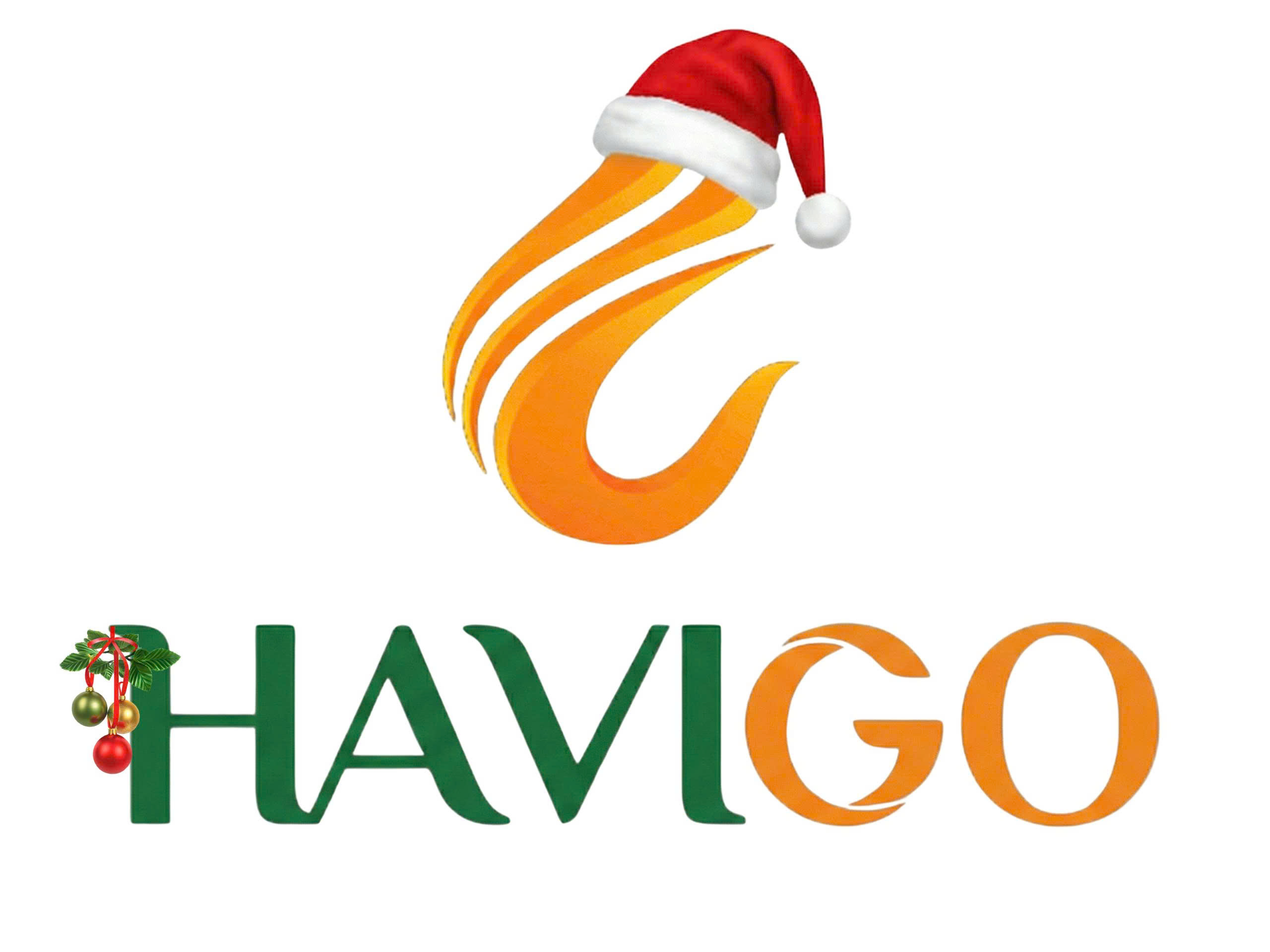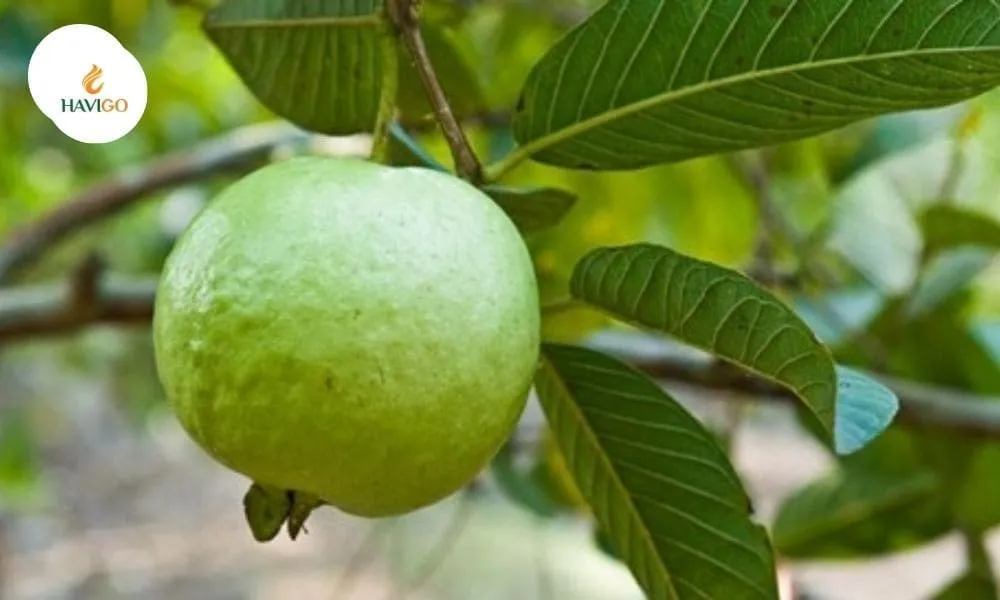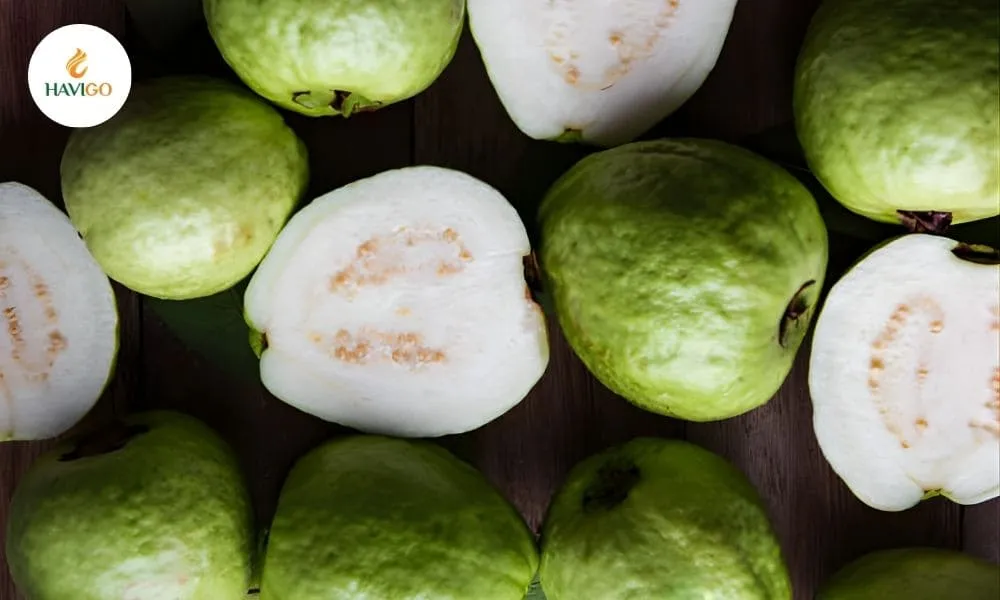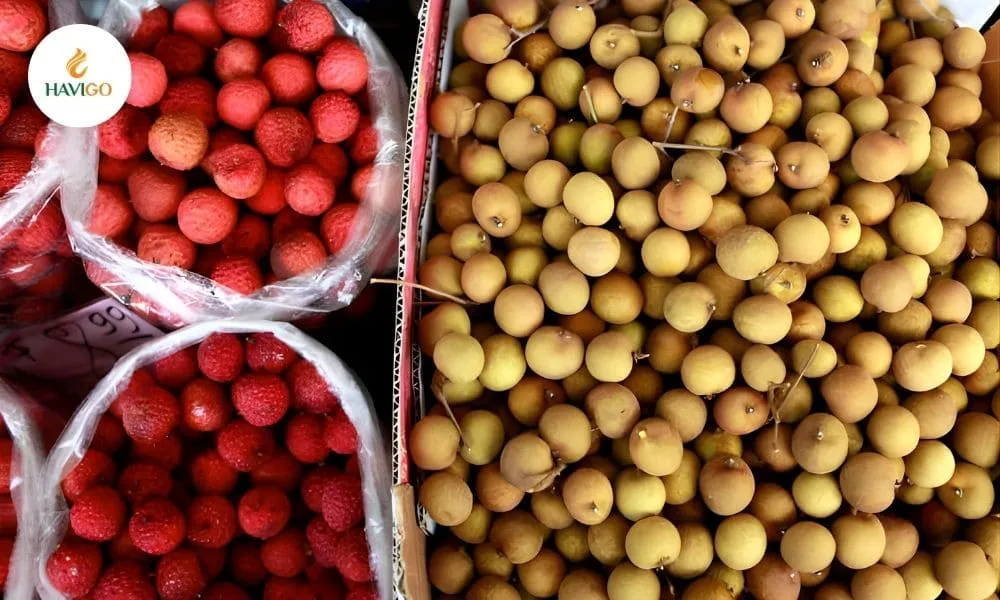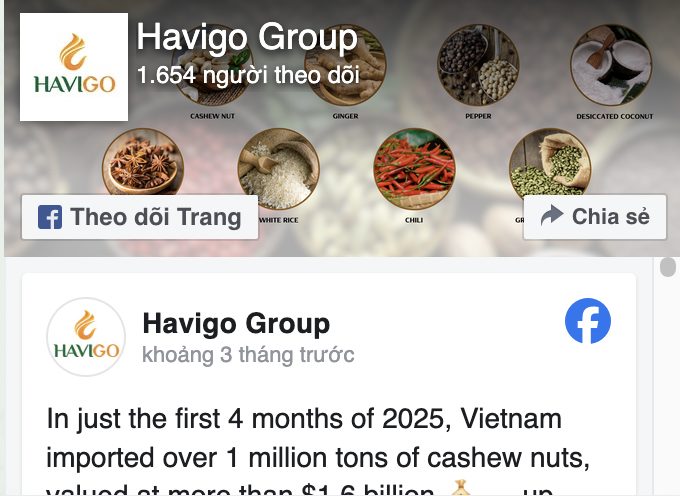Imagine a fruit that looks like a vibrant pink fireball, tastes like a cross between melon, kiwi and pear, and packs a nutritional punch. What a tropical fruit with a strange appearance and flavor. However. people all around the world love these differences. Welcome to the world of Vietnam dragon fruit and Binh Thuan – the “pitaya capital”.
1. Vietnam Dragon Fruit: A tropical marvel
While its tropical flavor might lead you to believe otherwise, dragon fruit (or pitaya) has a surprising origin. It traces its back to the cactus family, specifically from the arid regions of Mexico and Central America. This fruit shares its ancestry with cacti. Nowadays, farmers grow dragon fruit plants in many countries in South East Asia. Among them, dragon fruit from Vietnam is always rated as the best quality and flavor.
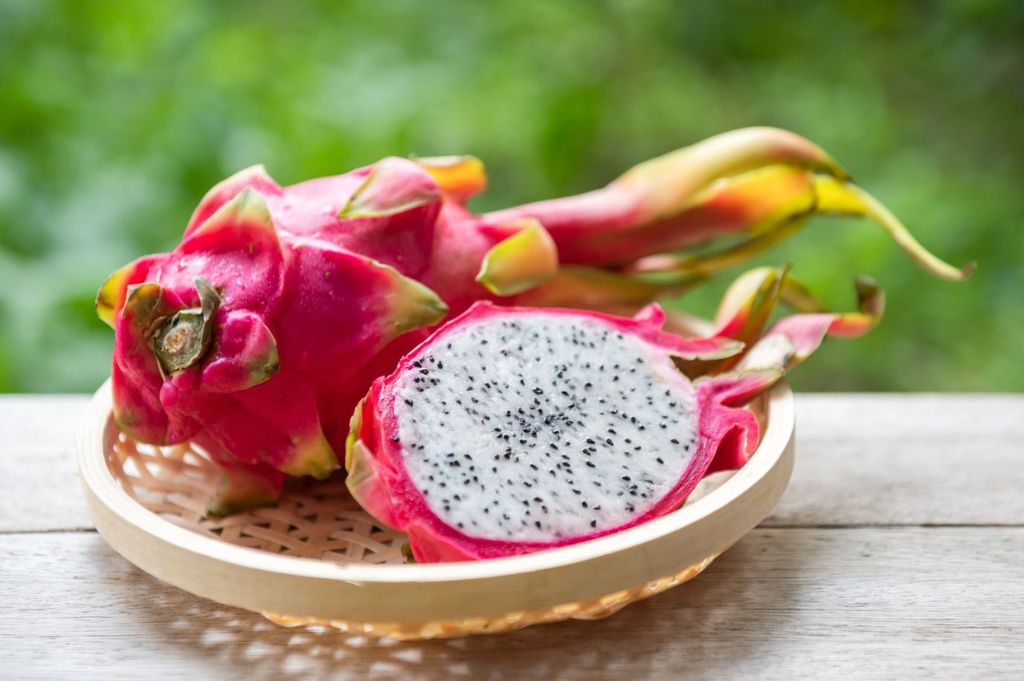
In recent years, Vietnamese dragon fruit has taken the culinary world by storm. Always considering dragon fruit to be one of the main products for export, so Vietnam invested strongly in the cultivation and process of this tropical fruit. In 2023, exporting this fruit brought about nearly $600 million to Vietnam’s economy. The biggest markets for these tropical fruits are China, the USA, India, Thailand, Korea, Japan, European Countries and so on.
2. What do the Dragonhead-shaped fruits taste like?
The tropical gem from Vietnam has a strange appearance, reminding of an Asian dragon head. Imagine holding a radiant pink orb in your hand. Its outer skin is attached with green scales, creating an appealing contrast. When sliced open, the flesh reveals a vibrant white or magenta hue with tiny black seeds. It’s as if nature blends a tropical sunset with a cosmic constellation.
People feel the taste of dragon fruit as a symphony of flavors. When biting, the flesh is subtly sweet, with delicate floral notes that dance on your taste buds. If you haven’t tried it before, imagine the juiciness of a perfectly melon combined with the refreshing of kiwi and the decent smell of pear. It’s a harmonious balance. And those tiny seeds? They add a delightful crunchiness to your experience.
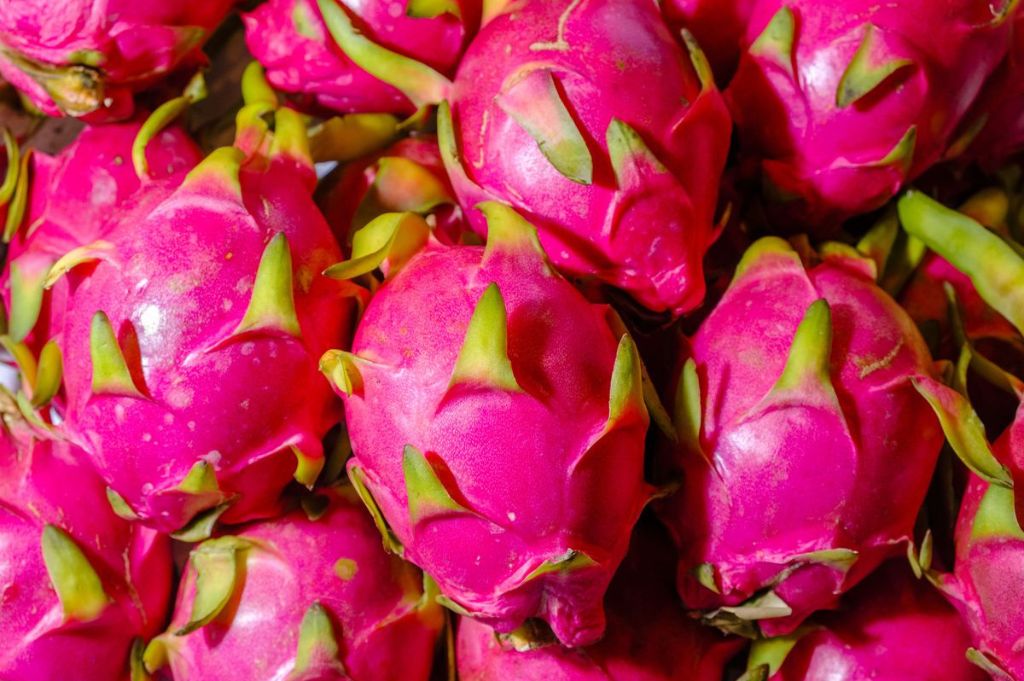
Containing many nutrients
Pitaya isn’t just a feast for the eyes and taste buds; it’s a nutritional source:
Firstly, it’s low in calories, 100 grams of dragon fruit contains about 60 calories. With its high water content, dragon fruit quenches your thirst on hot days. Next, this fruit is a source of antioxidants—compounds that combat free radicals and promote overall health. What’s better than consuming Vitamins and minerals from this tropical fruit? A dragon fruit consists of
- Vitamin C: A single serving of dragon fruit provides more Vitamin C than an orange!
- Iron: Iron is essential for oxygen transport in your blood.
- Magnesium: This mineral plays a role in muscle function, nerve health, and bone strength.
So, whether you’re savoring its beauty, relishing its delicate flavor, or nourishing your body, Vietnamese dragon fruit is a delightful addition to your cuisine.
3. Binh Thuan Province: A Dragon Fruit Heaven
Ideal climate for Dragon Fruit cultivation
To the southeastern coast of Vietnam, Binh Thuan Province stands out as a prime cultivation region for dragon fruit. This province provides the highest annual yield of dragon fruits for domestic and international markets. In order to achieve stable productivity, this province must have the support of nature: the ideal climate for cultivation.
Initially, Binh Thuan enjoys a warm, arid climate – a perfect match for dragon fruit. Sunlight is essential for pitaya plant development. So, long sun-drenched days in Binh Thuan provide ample energy for photosynthesis, allowing the plants to thrive.
Moreover, the soil composition plays a crucial role. Dragon fruit prefers well-draining soil, and Binh Thuan delivers just that. The sandy texture allows excess water to flow away, preventing waterlogged roots. This is vital because dragon fruit plants don’t prefer soggy conditions.

However, sandy soil lacks some nutrients, so farmers in Binh Thuan supplement it with organic matter and fertilizers to create a balanced environment.
Solving lack of water for cultivation
In fact, being in a semi-arid climate, Binh Thuan is the most harsh province in Vietnam. Therefore, water saving is a priority. With the drip irrigation systems, farmers can solve this problem and grow dragon fruit plants effectively.
Instead of flooding the entire field, drip irrigation delivers water directly to the plant’s root zone. Tubes with tiny holes release water slowly, minimizing evaporation and runoff. Therefore, this method conserves water, reduces weed growth, and prevents soil erosion.
Pitaya is ready to go overseas
When the dragon fruit ripens, skilled farmers handpick each fruit. They look for vibrant colors and firmness. After harvest, the fruit undergoes minimal processing inside the dragon fruit factory. Then the farmers wash, sort, and pack dragon fruits for distribution.
The process ensures the quality of this fruit. Due to that, Binh Thuan’s dragon fruit finds its way to international markets, including Europe, the United States, and Asia. The location near ports facilitates efficient export.
In summary, Binh Thuan Province’s climate, sandy soil, sustainable practices, and careful handling contribute to the exceptional quality of Vietnamese dragon fruit.
4. Four varieties of Dragon Fruit – Choose your favorite color
Most people think this tropical fruit has a basic red color skin and red flesh, and that’s all. However, it has more varieties than we can expect. And each of the variations has its own unique.
Red-Fleshed Dragon Fruit: This is often considered the common variety, and its popularity extends beyond Vietnam. It has red skin with white flesh and black seeds. The flesh has a mild, slightly sweet flavor.
White-Fleshed Dragon Fruit: This variety has white skin and white flesh. It is the least sweet of all the dragon fruit varieties, it has a slightly tart flavor that some people prefer.
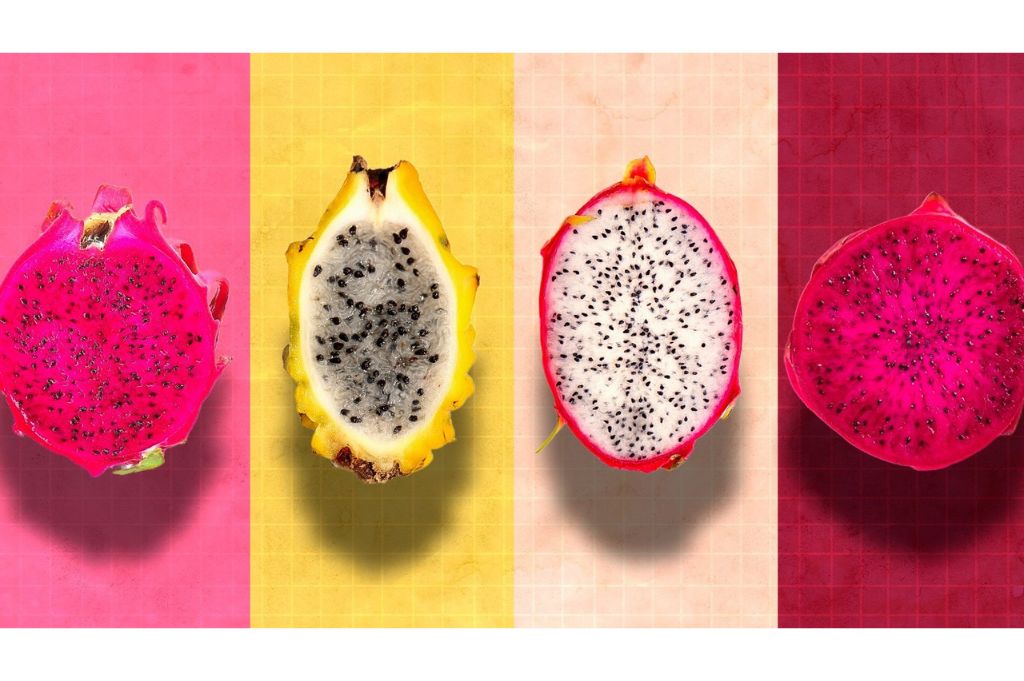
Pink-Fleshed Dragon Fruit: The vivid pink flesh is a showstopper with pink skin and pink flesh. It is sweeter than the red dragon fruit and has a flavor that is often compared to kiwi or watermelon.
Yellow-Fleshed Dragon Fruit: a brand new variety, the rarest of the four with yellow skin with white flesh. It is similar in taste to the white dragon fruit, however it may have a slightly sweeter flavor.
Whether you’re Team Red, Team White, Team Pink, or ready to embrace the new Yellow, dragon fruit offers a delightful adventure for your taste buds!
5. More culinary uses of Vietnam Dragon Fruit
Dragon fruit isn’t just a fruit. So, let your culinary imagination run wild and create many new and fresh dishes using this wonderful fruit. Here are the suggestions:
Juices and Smoothies:
- Dragon fruit juice: Blend dragon fruit chunks with a splash of water or coconut water to create a vibrant pink juice. For a better experience, add a touch of lime for extra zing.
- Smoothies: Combine dragon fruit with other tropical fruits like pineapple, mango, and banana.
- Fruit salads: Cubed dragon fruit adds a pop of color and a hint of sweetness to fruit salads. Pair it with berries, kiwi, and mint leaves for a visually stunning dish.
- Green salads: Surprise your taste buds by tossing dragon fruit cubes into a green salad. The mild flavor complements leafy greens, avocado, and a light vinaigrette.

Dessert:
- Sorbets and ice creams: Freeze dragon fruit puree with a touch of sugar into sorbet or churn it into homemade ice cream.
- Cake toppings: Decorate cakes with slices of dragon fruit. The contrast of the pink or white flesh against a cake’s frosting is visually stunning.
6. Vietnam Dragon Fruit – A natural nutrient source
Vietnam dragon fruit contains many nutrients, Vitamins and minerals like Vitamin C, B Vitamins, Iron, Magnesium… When the body absorbs nutrients, it can have good enhancement on overall health. Let’s find out what pitaya can bring to your health.
Natural skin care: Vitamin C supports collagen production, protects and upgrades your skin.
Immune-boosting: Vitamin C is essential for maintaining a robust immune system because it helps fend off colds, supports wound healing, and acts as a powerful antioxidant.
Energy metabolism: Dragon fruit contains B vitamins like B, B2, and B3. These play vital roles in energy metabolism, nerve function, and overall well-being.
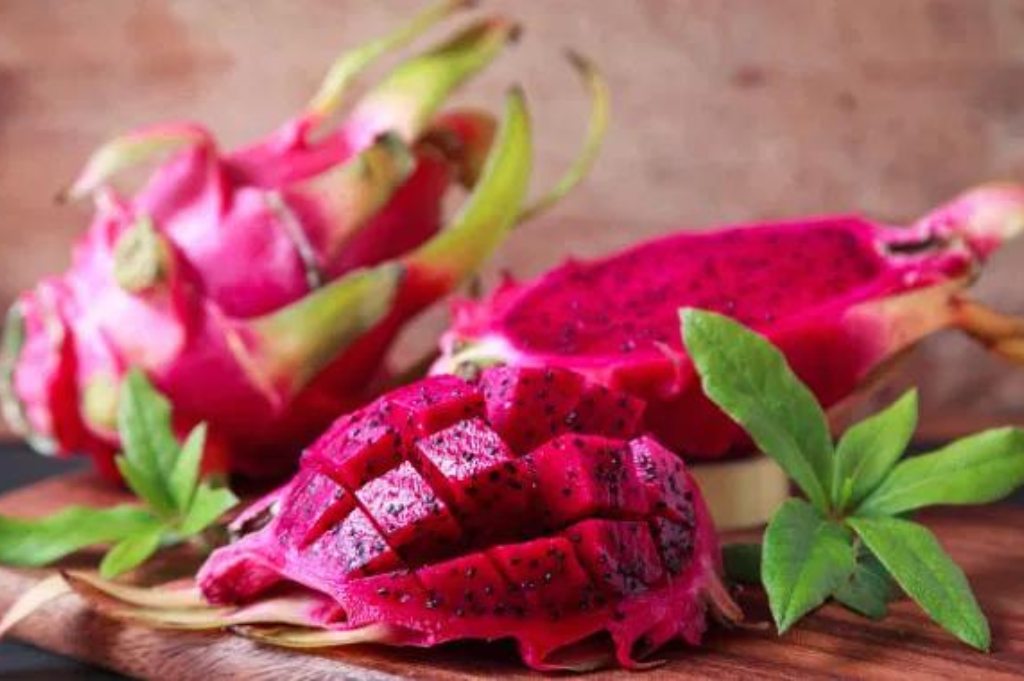
Prebiotic Properties:
- Gut health: Prebiotics are non-digestible compounds that nourish beneficial gut bacteria. They act as food for these friendly microbes, promoting a healthy gut microbiome.
- Enhancing digestion: It keeps things moving smoothly through your digestive tract.
- Feeding good bacteria: The fiber reaches your colon intact, where it becomes a feast for probiotics (the good bacteria).
- Reducing inflammation: A healthy gut reduces inflammation throughout your body.
So, dragon fruit is more than just a pretty fruit—it’s a wellness ally
Sweetness from the Arid Region
Vietnam dragon fruit stands as a nutritious fruit, thriving in arid regions despite climate challenges. Its vibrant appearance, sweet flavor, and potential health benefits make it a sought-after superfruit. In the future, pitaya exported from Vietnam will remain the fruit loved by people all over the world due to its unique appearance and flavor.
Havigo Company Limited operates in the field of agricultural export. We wish to bring high-quality Vietnamese agricultural products such as spices, rice, beans, and fruits… to the world. We supply you with high-quality products at the best price. If you find interested in importing Dragon Fruits, don’t hesitate to get in touch with us for better support via WhatsApp: +84 979 58 58 56.
